

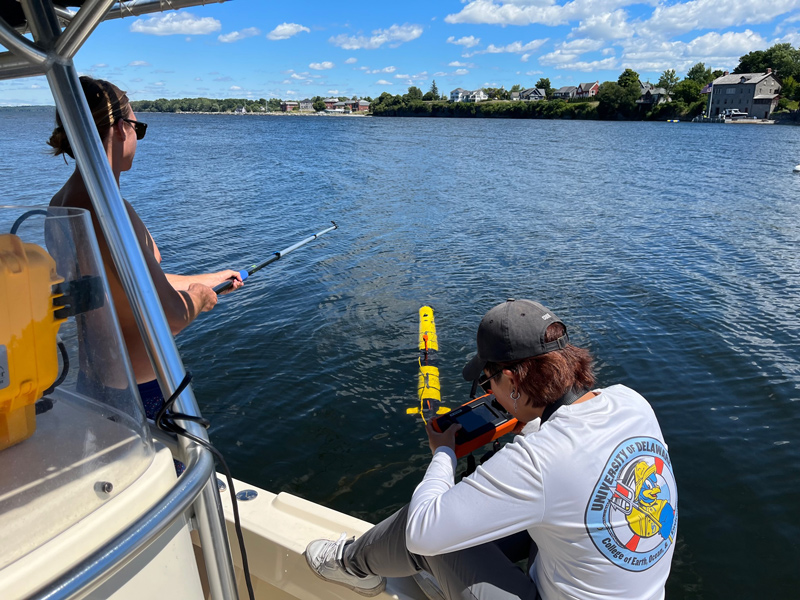
Discovering a shipwreck
Photos courtesy of Art Trembanis October 13, 2022
UD lab group discovers a shipwreck in Lake Ontario
During the War of 1812, Sackets Harbor, New York was one of the key areas of naval and military activity. Because of this, there have been several underwater shipwreck discoveries in Lake Ontario, where the village is located.
With sites of known shipwrecks for marine archeologists to explore, the area was perfect for the Coastal Sediments, Hydrodynamics, and Engineering Laboratory (CSHEL) at the University of Delaware to hold a summer “boot camp.” CSHEL director Art Trembanis, professor in the School of Marine Science and Policy, held the boot camp to provide a skill-building opportunity for lab members and two midshipmen interns from the United States Naval Academy who had spent the previous three and a half weeks with the lab. The boot camp let the participants brush up on skills, learn some new ones, and get hands-on experience with UD’s fleet of underwater robots and surveying equipment in the field.
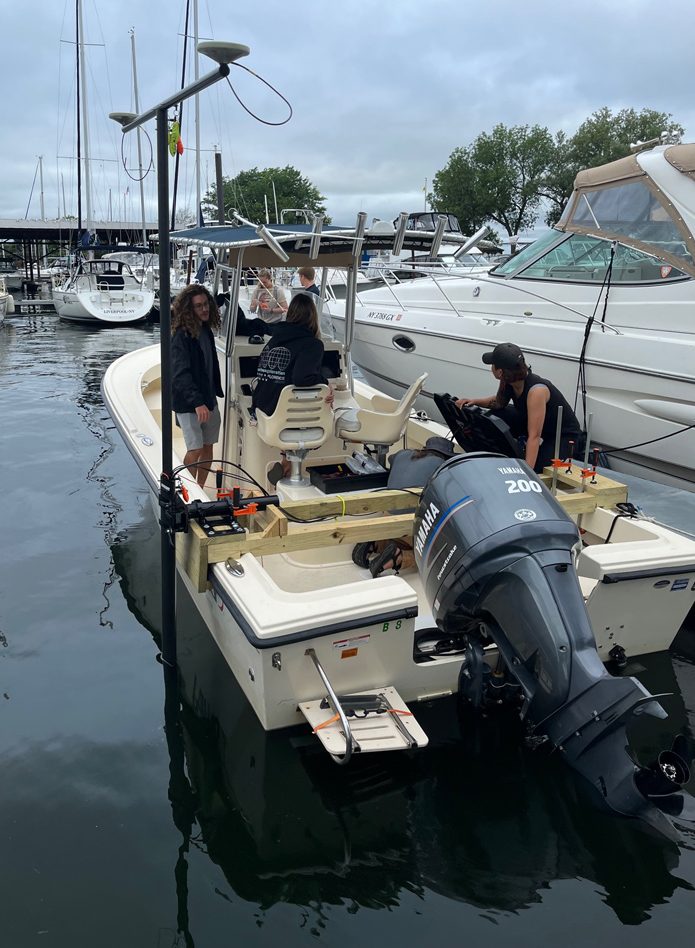
As it turned out, it was also a great opportunity for students to make a new shipwreck discovery of their own.
Two CSHEL members — Mark Lundine and Hunter Tipton — had previously identified an interesting underwater target in Lake Ontario in August 2021. While conducting an underwater survey, Lundine, a doctoral student at UD, and Hunter Tipton, who was a student at UD during the initial discovery and is now a marine technician who works with Trembanis and on the R/V Hugh R. Sharp, spotted something that looked interesting on their side-scan sonar. It looked man-made, possibly wooden, and sparked their interest.
Unfortunately, as it was found during the last half-hour of their last day in the harbor, Lundine and Tipton couldn’t map it further. Hoping they would get an opportunity to explore the object in the future, they logged the location and kept it in the back of their minds.
During the summer of 2022, when the two were once again able to travel to Sackets Harbor, they and the other members of the lab group revisited the site and performed high-resolution surveys using a combination of Norbit Multibeam and EdgeTech side-scan sonar and magnetometer measurements from an Iver3 Autonomous Underwater Vehicle (AUV).
The surveys included underwater photography and video from a remotely operated vehicle (ROV). These combined datasets allowed the team to confirm that the remains are those of a wooden ship. This important and sensitive information was immediately turned over to the New York State Historical Preservation Office to help preserve and further identify the wreck.
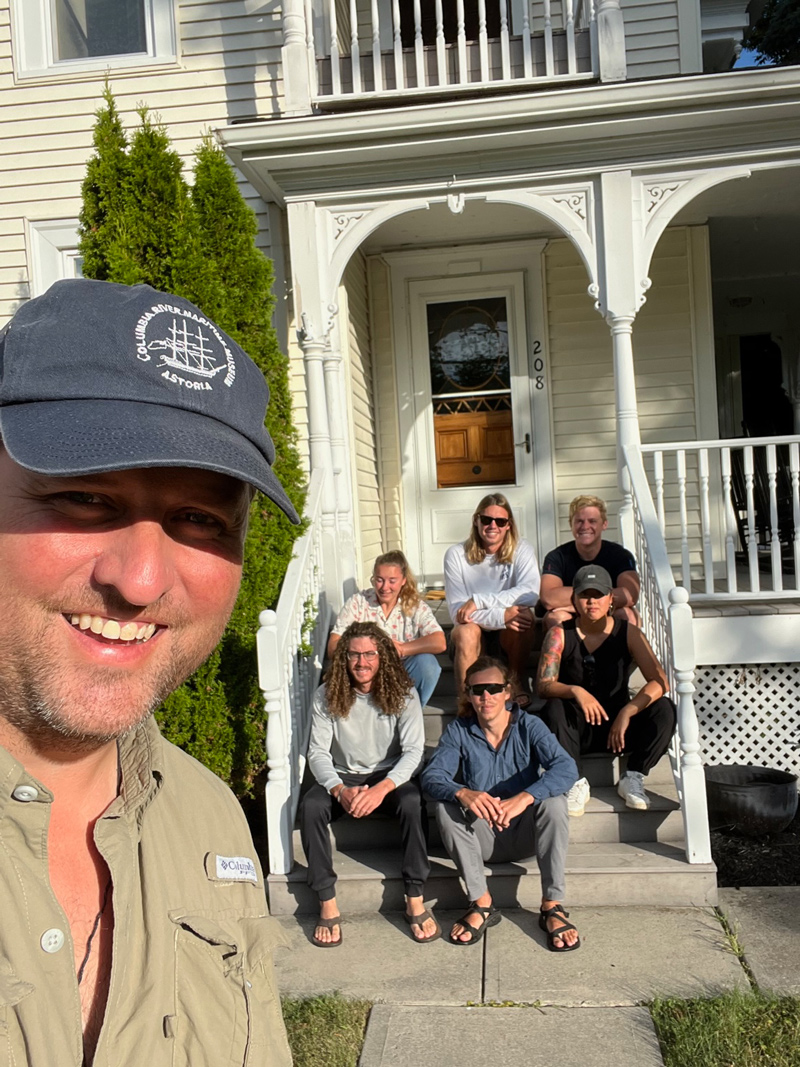
“We went over this mysterious target that we found the summer before with the AUV. We got some multibeam sonar over it, and then we sent an ROV down, which is a robot that you can remote control that has a really nice video camera,” said Lundine. “Hunter was piloting the ROV and sure enough, he went down and we could see this wooden structure that, length-wise, was between 10 and 20 meters.”
Trembanis explained that finding any shipwreck, let alone a wooden shipwreck that possibly dates to the 19th century, is not an everyday occurrence.
“Anytime you find a shipwreck, you’re opening up a story and a moment in human history,” said Trembanis. “Finding this wreck in the Great Lakes, it’s not just a new chapter, it’s potentially a whole new book, or, perhaps, a whole new wing of a library.”
Having located the shipwreck, Trembanis said it was important to inform the New York Historical Preservation Office so they can now try to identify and protect the wreck.
Getting the wreck out into the public arena also gives folks who might be familiar with these types of ships and history a chance to help with the identification. The data collected by the lab group includes measurements, images and diagnostic information that may also be able to help people familiar with different, historic boats identify the ship.
“It’s like a car enthusiast who can say, ‘That’s the axle of a ’44 Ford Coupe,’ that sort of thing,” said Trembanis.
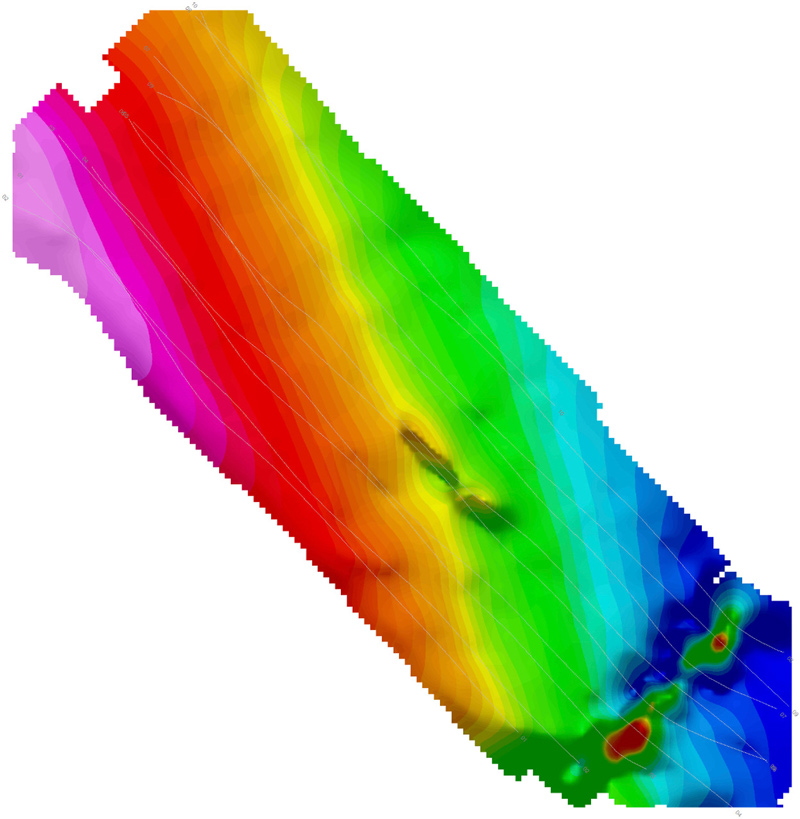
Local diver Dan Gildea was instrumental in helping the team inspect the site and was also a great source of local knowledge for the team.
Once they located the shipwreck, the lab group took multibeam, side-scan sonar, and magnetometer data as well as photos of the wreck. Now that they are back in Delaware, they can start to process the data to develop 3-D and 2-D maps of the wreck — as well as a 3-D mosaic from some of the photos. They perform all of their data processing and visualization through QPS marine software Fledermaus.
This data — as well as the other data they collected from the known shipwrecks they used as practice with the equipment — provides the basis for a lot of the other training and testing development that goes on in the lab. New algorithms can be tested on the data, and it can be used for educational purposes for other students.
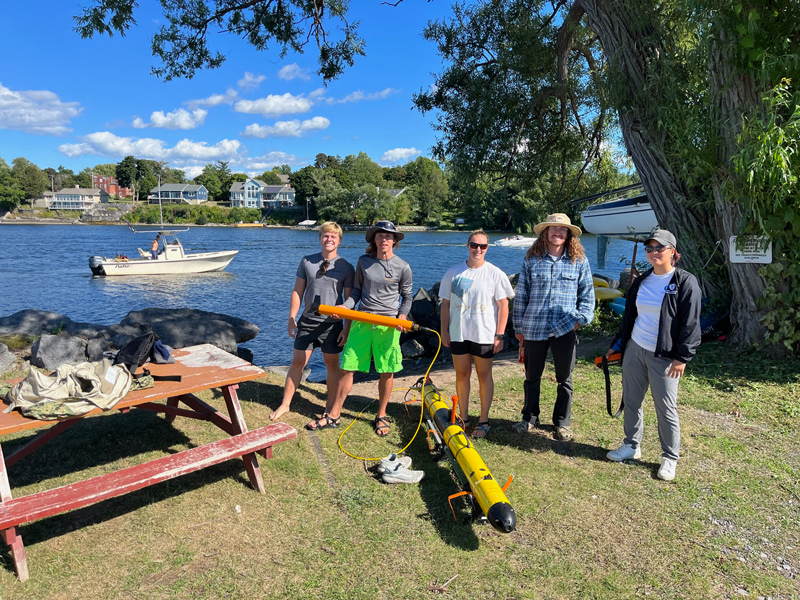
Being able to secure all of the data made finding the shipwreck the perfect culmination to an already successful boot camp.
“Part of the reason we went was to get everyone comfortable and familiar with the equipment, which we achieved,” said Trembanis. “So even if we didn’t find this shipwreck, it was a totally, completely successful week. We checked off a lot of boxes, and the cherry on top, last day in the field, boom, new shipwreck.”
Industry Partners
In addition, the lab group was able to help out one of their industry partners who, in turn, was able to help the students and midshipmen learn about his experiences in the industry.
Jeff Snyder, Director of AUV Surveys from Terradepth, a company that collects comprehensive, high-resolution ocean data, took part in the boot camp to test out the magnetometer from a company called Marine Magnetics that was being utilized by the lab.
Trembanis said this has a dual benefit, as Snyder was able to check out a product being used in the field and the students got to meet and network with an industry professional.
“For our industry partners to come out with us in the field is a tremendous benefit as it allows them to meet our team and suddenly, they know some students who are in the process of finishing or getting done or might be looking for jobs in the next few years,” said Trembanis. “So it’s a good opportunity. It’s not just meeting at a career fair or interacting over a phone or a Zoom interview. We’re actually seeing and working with folks for a training exercise, and rather than any of this being hypothetical, it was real.”
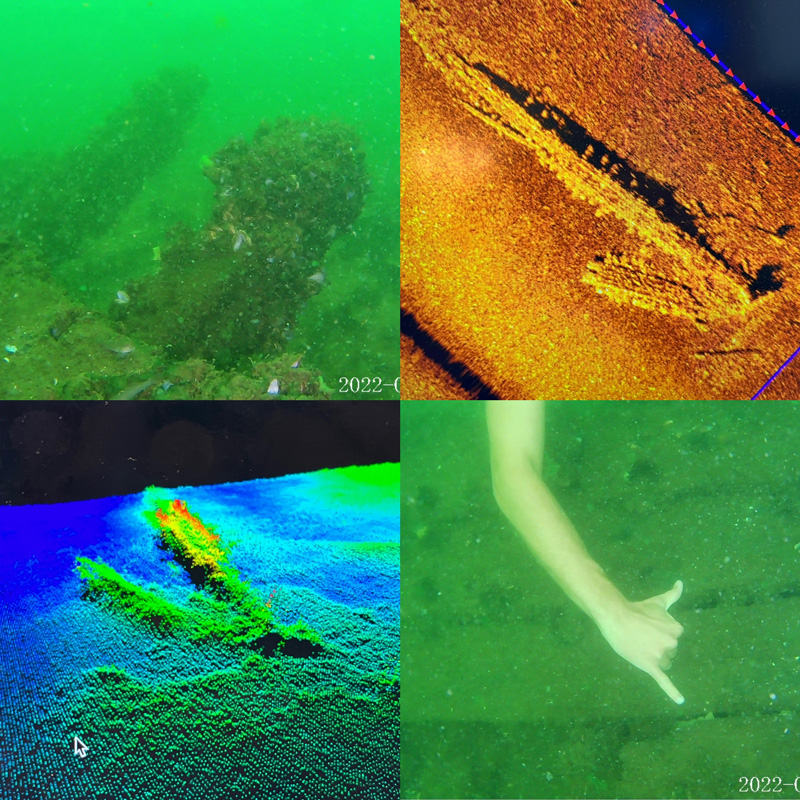
Contact Us
Have a UDaily story idea?
Contact us at ocm@udel.edu
Members of the press
Contact us at 302-831-NEWS or visit the Media Relations website

